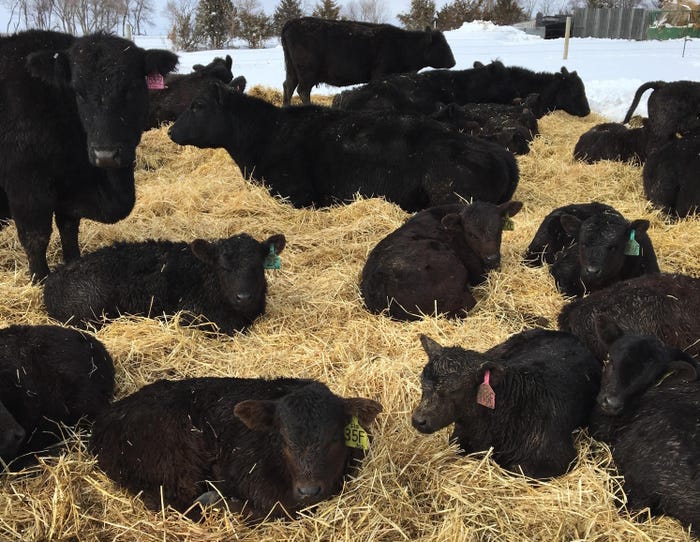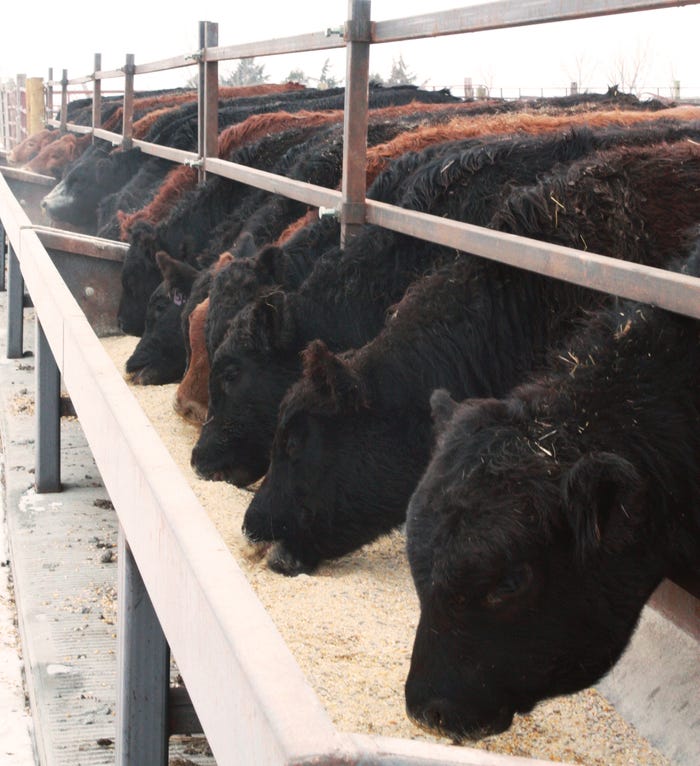Sometimes agricultural advocacy works and sometimes it doesn’t, but we must continue to tell our stories daily to make an impact.
April 16, 2018

If you’ve been reading the BEEF Daily blog for a while now, you know that one of the topics I write about the most is the importance of agricultural advocacy. Sometimes I feel like a broken record, but I truly feel that our future in this industry hinges on consumer perceptions.
If our urban counterparts are misinformed by environmental and animal rights activists groups, they are more likely to vote with their dollar and in the voting box for policies and regulations that directly impact our business, most likely in a negative way.
So we must tell our stories. That’s what we’ve been focusing on in April as we have urged readers to use the hashtags #BEEFMagShares and #CattleTales on social media to talk about what we do on our ranches to get a nutritious beef product from pasture to plate.
VIEW: Here's a look at the CattleTales social media posts
Sometimes we assume when we make efforts like this to promote our product that we are simply preaching to the choir; however, that simply isn’t so. For example, I received a very angry email yesterday about the #CattleTales promotion that read: “You are pure psychopaths making a celebration out of enslavement, rape, torture, murder and dismemberment. Even maggots in an open wound play a positive role; they put off gangrene. You are lowest of the low. Unadulterated evil.”
If the other side is paying attention, clearly we’re on the right track! I chose to ignore the email instead of responding because it’s clear this person has made up his mind about animal agriculture, and it would be a waste of breath to try to convince him otherwise.
However, I had another opportunity over the weekend to advocate for agriculture that I almost chose to ignore, and I'm glad I didn't! I had posted an image of our yearling bulls eating at the feedback during the Xanto Blizzard on our family’s business page. I captioned it by saying we were praying for the ranches outside in the cold over the weekend. We received a record-breaking 16” of snow during the ordeal, so not only was it an unexpected blizzard for mid-April, but it was a big one to contend with, too!

VIEW: Ranchers fight through powerful Xanto blizzard
After posting the image, a woman from New Jersey commented, “Why are these animals encaged? Disgusted!”
Immediately, I thought, just ignore it, Amanda. She’s clearly one of those animal rights folks who don’t believe pets and livestock are property. No matter what you say she’ll still think society should eat less beef, there should be fewer cattle, and that animals are better off roaming wild to fend for themselves than being under the care of a dedicated rancher.
Yet, I really hate to leave comments on our business page unanswered, so I took a shot at changing her mind. I wondered if she perhaps thought the bulls’ heads were locked into the bunk while they ate, and I thought there might be a chance to seize an educational moment, so I responded. Here is how the conversation went:
Amanda: You are mistaken. These bulls are not encaged. This is their “dining room table” (called a feed bunk) where they eat a balanced, nutritious meal twice daily.
Consumer: Really? Looks like they are caged to me. Ok, now I see what you’re saying, but why are they still there?
Amanda: They do live in a pen, if that’s what you mean. But we work incredibly hard to provide feed, shelter and clean water to our cattle to ensure they are healthy and happy.

Consumer: That’s what I mean. Thanks for answering my questions. The picture is deceiving for people not knowledgeable about farming like me.
Amanda: We welcome questions anytime! There are a lot of misconceptions about animal agriculture out there thanks to activists with hidden agendas who want to take money from good-hearted people, but we are truly proud of what we do as a family farm in caring for our land, livestock and people.
Consumer: I’m glad you cleared this up for me. You are also correct the way things are misrepresented.
Amanda: Here is a closer look at what these cattle are doing. The yellow stuff is their meal. This bunk also acts like a fence, so they can’t just walk out and wander onto the road or get lost somewhere. They walk up to the bunk where grain is placed and eat until they are full. Then they can simply back up and move freely as they please until the next meal. They aren’t actually locked in place at all, but I could see how it would look that way!

Amanda: Animal welfare is our top priority, too, but the message gets lost when animal rights groups try to twist things to make it look like we’re doing something bad! We love animals around here! They are our life!

Consumer: Amanda, thanks for clearing my concerns about the photo on the Facebook post. All it showed was a picture with no explanation leading me to think the animals were stuck there.
Amanda: You’re very welcome! We probably take for granted that people know what’s going on in the photos. If you ever have any questions about agriculture online and would like a rancher to give you a better explanation, I’m always happy to be a resource with first-hand experience. Take care!
Consumer: I will do that. Take care and thank you!
I don’t share this to toot my own horn because the exchange turned out so positively when I assumed she had already made up our mind about us, but I share it as a reminder that we must simply tell our stories day in and day out. Sometimes it will turn out well, and other times it won’t. Yet, even if we can’t change that person’s mind, chances are someone else is reading and could be learning about agriculture from our stories.
Even after the #CattleTales contest is over, I hope you’ll continue to join me in sharing your story online. We can make a difference one consumer at a time, but we have to be active and engaged in order to do so.
About the Author(s)
You May Also Like





